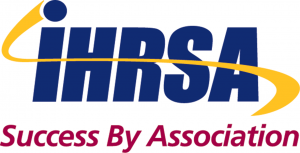Labor Guidelines to Impact Health and Fitness Clubs
Posted: August 13, 2015 in IHRSA
 IHRSA: Success By Association
IHRSA: Success By Association
BOSTON, MA – Recently, the Wage and Hour Division of the U.S. Department of Labor (DOL) issued new details regarding employee and independent contractor classification under the Fair Labor Standards Act (FLSA). The DOL will now be using a more generalized definition to refer to “employees,” since worker misclassification has become an increasing issue.
Therefore, it is important that you, as a club operator, take the time to make sure that your staff is appropriately classified. Most crucially, it is important to note the length of any relationship, especially when dealing with independent contractors – as this amount of elapsed time can be an indication of employment.
“Employ,” as defined by the FLSA, means to “suffer or permit to work.” This broad definition applies to the work that any employer directs and also to the work that the employer permits to occur.
Additionally, an “economic realities” test can be distributed in order to inform whether a worker should be classified as an employee or as an independent contractor – the difference being whether the worker is deemed as economically dependent on their employer or whether run a stable business on their own. The DOL has suggested using answer to the following questions to make a ruling on this:
- Is the worker an integral part of the employer’s business?
- Does the worker’s marginal skills impact the worker’s opportunity for profit or loss?
- How does the worker’s relative investment compare to the employer’s investment?
- Does the work performed require special skill and initiative?
- Is the relationship between the worker and the employer permanent or indefinite?
- What is the nature and degree of the employer’s control?
The DOL has stated that these factors should be evaluated as a whole “…in light of the ultimate determination of whether the worker is really in business for him or herself (and thus is an independent contractor) or is economically dependent on the employer (and thus is its employee).”
These guidelines do not reflect a change in the law or alter the DOL’s perspective on how workers should be classified, but they do emphasize that most workers should be considered employees.
In addition to the change in guidelines, Republican lawmakers are requesting changes on worksite wellness rules regarding the cap on premium rewards for wellness programs; the cap on premium rewards for tobacco cessation; the definition of “reward”; employee-only coverage; the affordability standard; the safe harbor provision for insurance plans under the Americans with Disabilities Act and the implementation date of the rule once it is finalized.
The lawmakers are requesting that the Equal Employment Opportunity Commission (EEOC) make changes to its proposed rule that would amend Title I of the Americans with Disabilities Act (ADA) as it relates to worksite wellness programs.
The EEOC rule suggests that changes be made to the ADA regulations. If implemented, these changes would impact the way employers could use incentives to encourage employee participation in programs focused on disability-related inquiries or medical examinations.
It is important to be aware of these proposed changes as they could impact your club and its operations. We will continue to keep you informed with any updated information from the EEOC.
As always, if you have further questions, please do not hesitate to contact IHRSA’s public policy team at gr@ihrsa.org.

